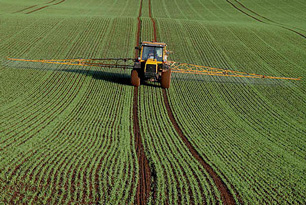Metolachlor (S-Metolachlor)

Metolachlor (also known by its common enantiomer name S-Metolachlor) is an herbicide used to control grassy and broad-leaf weeds around a wide range of crops including corn, soy, legumes, peas, potatoes, fruits, cabbages, peppers, cotton, sorghum and safflower. It's also used in non-crop areas, including residentially, on turf, ornamentals, forestry, roadsides and other rights-of-way.
Metolachlor can arrive in drinking-water from run-off from its agricultural use, although the World Health Organization reports that it is more likely to be found in surface water than ground water.
Health Effects of Metolachlor
Metolachlor has a low toxicity with acute exposure. Long-term exposure to large amounts has been shown to cause changes in kidney weight. It is classified by the EPA as a possible human carcinogen, having caused tumors in rats but not in mice.
Water Treatment for Metolachlor
According the the WHO, metolachlor may be treated with granular activated carbon (GAC).
Sources: EPA, WHO, EXTOXNET, Photo: geograph.org.uk, author: Walter Baxter
Site Index
Filtration Systems
- Aeration for Iron & Sulfide
- Backwashing Filters
(whole house & well units)
- Chlorine & Chemical Injectors
- Countertop Water Filters
- Emergency Filters
- Garden Hose Filters
- Reverse Osmosis, Residential
- Reverse Osmosis, Commercial
- Shower Filters
- Specialty Filters
- Ultraviolet Systems
- Undersink Filters
- Water Softeners
- Whole House Filters
Cartridges
Parts
- Replacement Parts
- Faucets
- Filter Media
- Fittings
- Housings
- O-rings
- Pumps
- Pura UV
- R.O. Parts
- R.O. Tanks
- R.O. Booster Pump
- VIQUA UV